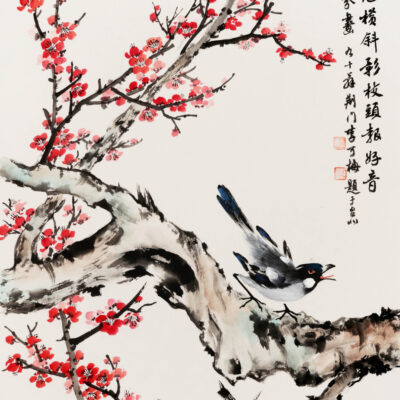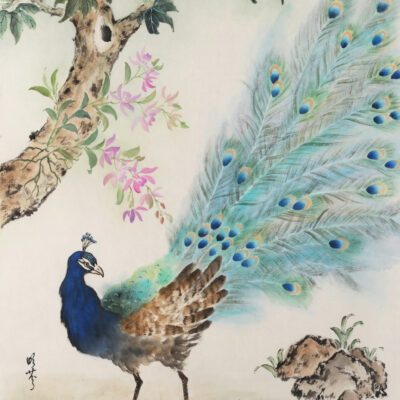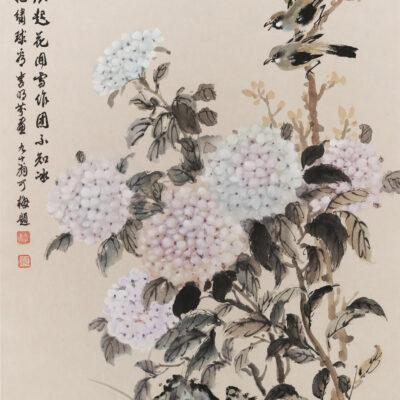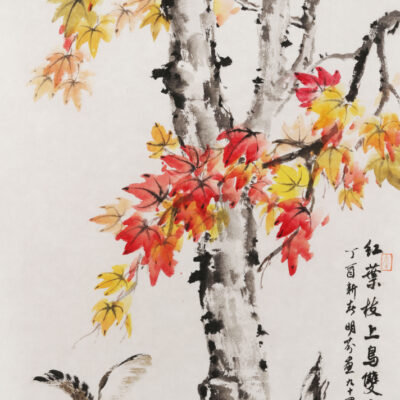Ming Fen Jan-Watercolor
-

Charming Magpie on the Plum Blossom
-

Emerald Feathers Unfold in the Summer Breeze
-

Hydrangeas
-

Maple Tree
Ming Fen Jan
Chinese painting has always run in parallel to China’s history and culture. Closely related to Chinese calligraphy, painters often utilize similar strokes to paint as well as to write. Similarly, a painting is not considered finished until a deliberately reserved blank space on the paper has been inscribed with a short poem describing the painting, the painter’s name, and their seal for authentication. Unlike art often seen in the Western canon, traditional Chinese paintings emphasize less on adherence to reality—there is no definitive angle of view or light source. The painter has a fair amount of freedom to show their artistic expression through their composition by utilizing the negative space of the foreground and background. A skillful artist balances light and wet brushstrokes with dark and dry ones to evoke a certain mood. These characteristics are the essence of Chinese painting and continue to stand the test of time.
From my own experience, the subdued colors of the distant hills and the silent murmurs of a bubbling stream in a painting have the power to stretch my imagination and transport me to a different place. l am constantly mesmerized by magnificent paintings complemented with exquisite calligraphy. They never cease to amaze me. When I paint, I focus completely on the task at hand.
My passion for art started early in childhood. I have always loved flowers and plants; I find joy in seeing wildflowers blooming or tiny blossoms poking out from the crevices of rocks. Before painting them, I like to study the way they grow in nature, making every effort to capture their beauty, including the graceful way they dance in the wind.
It’s not easy to paint on raw xuanzhi (rice paper); it can be difficult to control the water and paint. To develop these skills, practice is key. By learning “bird and flower” Chinese painting, one often starts with the Four Gentlemen, namely the four plants: the plum blossom, the orchid, the bamboo, and the chrysanthemum. These plants also symbolize the four seasons. It might take years for one to master the brushstroke techniques used in painting the Four Gentlemen, but once one has obtained these core skills, other subjects become easier.
For beginners, I can’t emphasize enough the importance of studying the styles and principles of traditional Chinese painting. Learning from the masters is a crucial step for all artists. Don’t deviate—not until you have acquired the complete knowledge of the basics, such as mixing several colors on a brush tip or mixing colors with black ink. Be patient, your style will emerge when you are ready. My friends, why not challenge yourselves? Let your brush encapsulate the beauty of that flower you have always wanted to paint. The flower you create will never wilt and will forever bloom in your heart; its fragrance in your memory, for years to come.
Email: minglee_06@yahoo.com
Website: www.mingjan.com
Instagram: mingjanart
